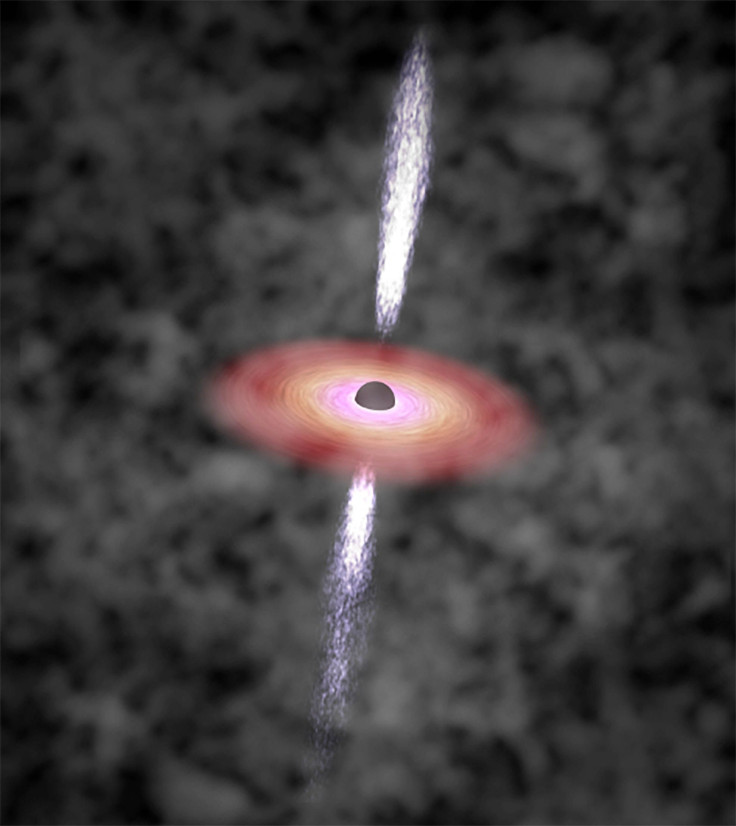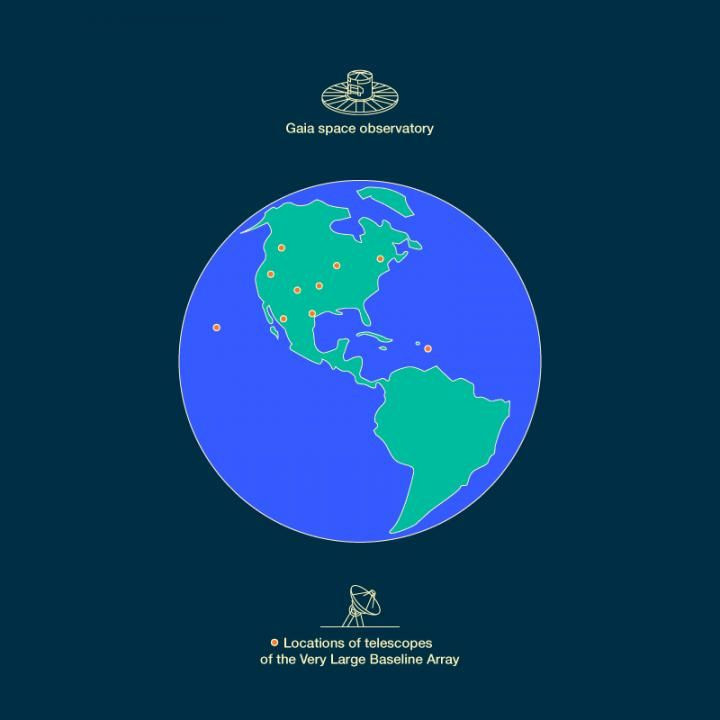Scientists Find New Way To Study Supermassive Black Holes, Quasars, Accretion Disks

Quasars are the brightest objects in the universe and yet, astronomers know little about these mysterious, remote objects that, along with supermassive black holes, are thought to be at the centers of many — if not all — galaxies. But a new method that exploits the discrepancies between observations from different types of telescopes promises to show in unprecedented detail some of the properties of quasars and the relativistic jets of matter associated with them.
Scientists from Moscow Institute of Physics and Technology (MIPT) took data from European Space Agency’s Gaia space observatory — launched in 2013 — and from a large network of ground-based radio telescopes. While Gaia makes observations using optical telescopes in space, the data from the radio telescopes was used for very long baseline interferometry (VLBI) — a technique that uses multiple radio telescopes to act as one giant telescope.

They found unexpected discrepancies between the data from the high-precision observations from the two sources, and used that information to determine previously unknown properties of quasars.
“By comparing the data from radio interferometers and optical telescopes, we can obtain information about hot jets and the accretion disks surrounding black holes at the center of galaxies in the visible part of the spectrum," Yuri Kovalev of MIPT, who co-authored a recent paper on the findings, said in a statement Tuesday. "We have now gained a better understanding of what their structure is and what processes occur inside them.”
“Bright extended optical jets are indirectly discovered by us from the performed comparison of the VLBI and Gaia observations of quasars," Kovalev told International Business Times. "These jets are bright enough to be able to shift the centroid of optical position of quasars for many parsecs from the center of a quasar — by as much as tens or even hundreds of parsecs.”
The jets that emanate from active galactic nuclei (AGN) — the regions at galactic centers, which have higher than normal luminosity across the electromagnetic spectrum — are presently not well understood, including processes involved in their formation and their composition. This is primarily due to limitations imposed by the capabilities of present-day astronomical observation instruments. The increased precision provided by this new method, which does not need any new instruments or observations, will help improve our knowledge of not just these jets, but also of supermassive black holes and accretion disks that surround them, the researchers said in the statement.
“We show that the VLBI/Gaia position jitter correlation with the AGN optical light curve may help to locate the region where a flare has occurred and estimate its distance from the supermassive black hole and the ratio of the flux density in the flaring region to the total flux density,” they said in the paper.
Asserting their method provides superior results than observations by the Hubble Space Telescope, and even better resolution than its successor — the James Webb Space Telescope that NASA will launch in October 2018
"It is no exaggeration to say that a new area of observational astrophysics has begun," Kovalev said.
The paper, titled “Observational consequences of optical band milliarcsec-scale structure in active galactic nuclei discovered by Gaia,” appeared online in the journal Monthly Notices of the Royal Astronomical Society.
© Copyright IBTimes 2024. All rights reserved.





















